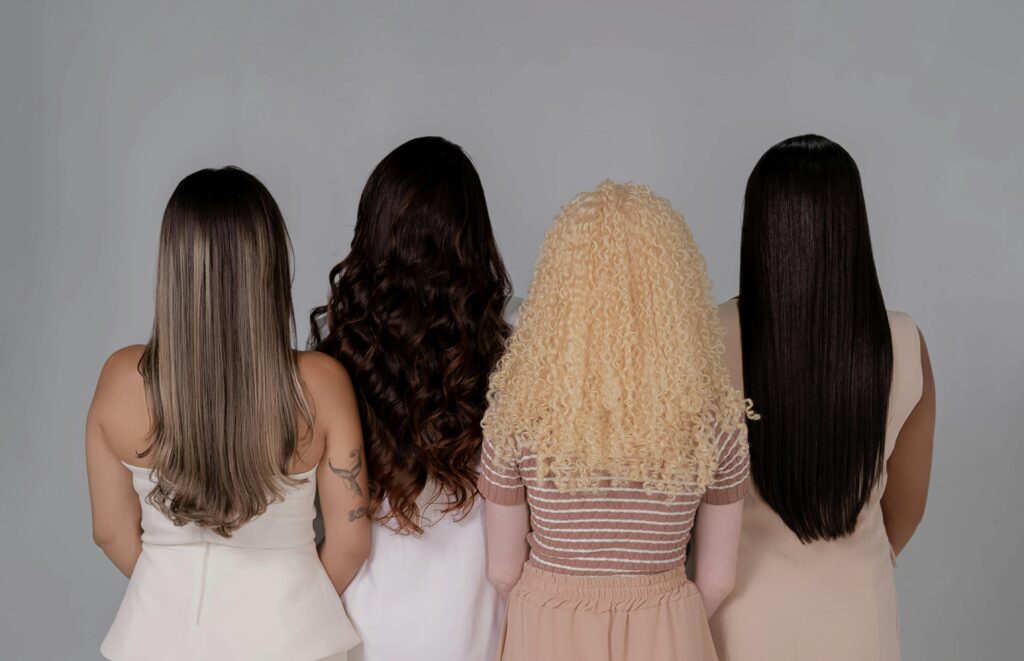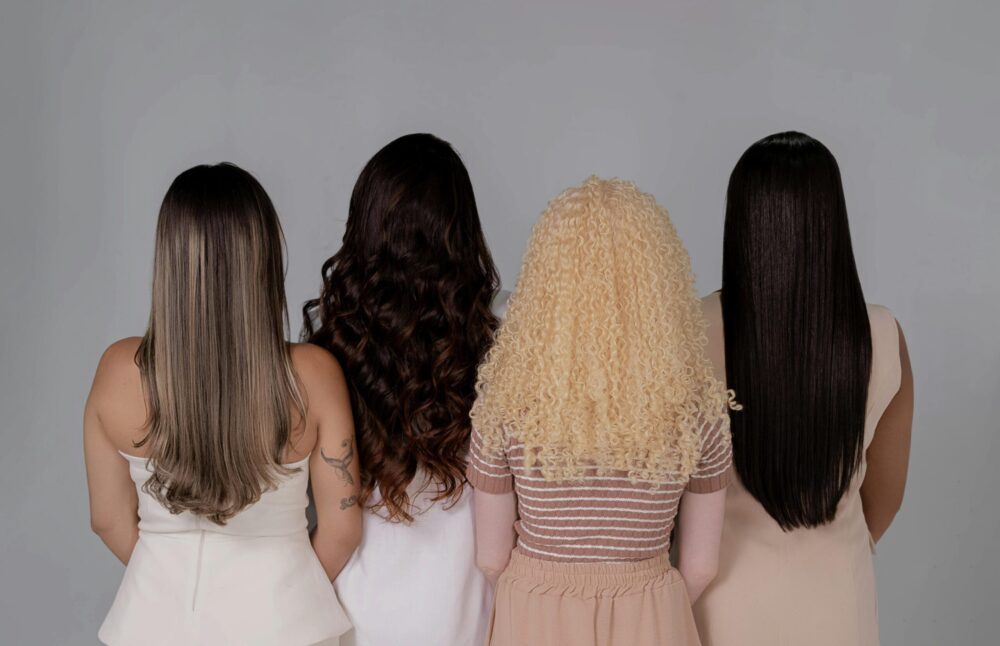If you’ve been struggling with dry, frizzy curls, it’s time to learn how to moisturize curly hair properly. Curly, coily, and wavy textures are naturally drier than straight hair because the scalp’s oils can’t easily travel down the hair shaft. That’s why keeping moisture locked in is essential for soft, defined curls.
Moisture isn’t about layering random products; it’s about understanding how humectants, emollients, and sealants work together to create lasting hydration. Let’s break down how to give your curls the care they deserve.

The Moisture Trinity: Humectants, Emollients, and Sealants
To moisturize curly hair effectively, you need to balance three types of ingredients. The science behind moisture balance in curls is explained beautifully in NaturallyCurly: The Science of Moisture in Curly Hair.
1. Humectants – Attract Moisture
These draw water from the air into your hair.
Examples: Glycerin, Honey, Aloe Vera Juice
💡 Tip: In dry climates, balance humectants with oils to prevent frizz.
2. Emollients – Soften the Hair Shaft
They smooth and fill in gaps in your cuticle for soft, touchable curls.
Examples: Shea Butter – click here for organic product, Jojoba Oil, Sunflower Oil
3. Sealants – Lock It All In
Sealants trap moisture inside, keeping curls hydrated longer.
Examples: Castor Oil, Coconut Oil, Mango Butter

Your Step-by-Step Hydration Routine
This is the routine every curly girl should follow after washing her hair. For a complete guide to building the perfect foundation, check out our Perfect Wash Day Routine for Curly Hair.
- Start with a Hydrating Leave-In Conditioner
Apply a water-based leave-in containing humectants like glycerin or aloe. - Use a Curl Cream (Emollient Layer)
Follow with a rich curl cream to define and clump curls. - Seal in Moisture
If your curls are high-porosity or feel dry, seal the ends with a few drops of lightweight oil. - Hold with Gel
A good gel not only provides hold it also creates a moisture barrier.
Deep Hydration: DIY Hair Masks
If you’re new to natural hair care, you might want to revisit our Curly Hair Routine for Beginners to understand how hydration fits into a consistent regimen.
Use one of these weekly treatments to keep your curls nourished:
✨ Intense Moisture Mask:
- 1 ripe banana
- 2 tbsp honey
- 3 tbsp yogurt
Mix, apply to damp hair, cover, and rinse after 30 minutes.
⚡ Quick Boost Mask:
- 3 tbsp coconut milk
- 1 tbsp olive oil
Warm slightly and apply for 20 minutes, then rinse thoroughly.
How to Moisturize Curly Hair Based on Porosity
- Low Porosity: Hair resists moisture → use heat or steam to open cuticles.
- Normal Porosity: Balanced—most products work well.
- High Porosity: Absorbs fast but loses moisture quickly → use thick creams & oils.
Signs Your Hair is Well-Moisturized

How can you tell if your routine is working? Your hair should feel:
- Soft and supple, not hard or brittle
- Elastic (a stretched curl should bounce back, not break)
- Defined with minimal frizz
Conclusion
Mastering moisture is the cornerstone of curly hair care. By layering your products strategically and listening to what your hair needs, you can finally say goodbye to dry, thirsty curls.
Have you tried a DIY hair mask before? Which ingredients does your hair love the most? We’d love to hear about your experiences!
Frequently Asked Questions (FAQ)
Q1: Why does my hair still feel dry after I moisturize?
A: This is often a sign of product buildup that blocks moisture from getting in. Try a clarifying shampoo to reset. It could also mean you need a protein treatment to strengthen your hair’s ability to hold moisture.
Q2: Can I over-moisturize my hair?
A: Yes! This is called “moisture overload.” Hair will feel mushy, stretchy, and limp. If this happens, scale back on deep conditioning and incorporate a protein treatment to restore balance.
Q3: Is coconut oil a good moisturizer?
A: Coconut oil is an excellent sealant, but it is not a moisturizer on its own because it doesn’t contain water. Always apply it to damp hair or over a water-based product to lock in moisture. A good coconut brand recommendation click here.
Q4: How often should I do a deep conditioning treatment?
A: Most curlies benefit from a deep conditioner once a week. If your hair is chemically treated or high-porosity, you might need it twice a week. Low-porosity hair might only need it every two weeks to avoid buildup.


Leave a Reply